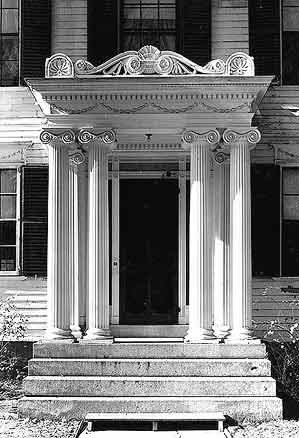


| Materials | |
| Craft Details | |
| checklist |
The second step involves looking at the building at close range. This is where you will be able to see and appreciate the qualities and workmanship of exterior surfaces – that is:
• the building's specific materials
• and its craft details
You've already learned about the character of a historic building from a distance. What distinguishes the close-up visual character is often the result of materials that differ sharply in their color and texture. They often convey that sense of craftsmanship and age that distinguishes historic buildings from other buildings.
It is important to understand that many of these materials can be easily damaged or obscured by work that affects their surfaces. This can include painting previously unpainted masonry, rotary disk sanding of smooth wood siding to remove paint, abrasive cleaning of tooled stonework, or repointing reddish mortar joints with gray portland cement.
There is an almost infinite variety of surface materials, textures and finishes that are part of a historic building's character which are fragile and easily lost.